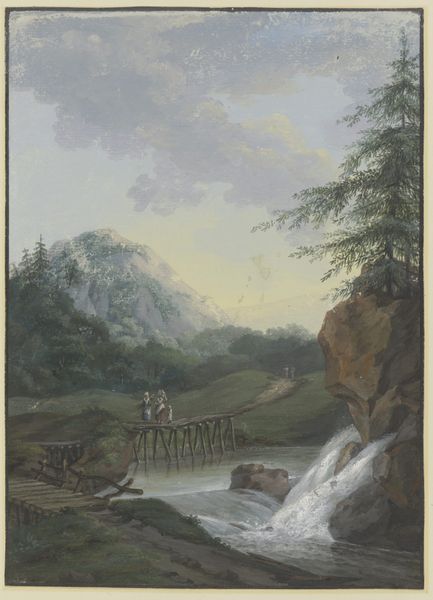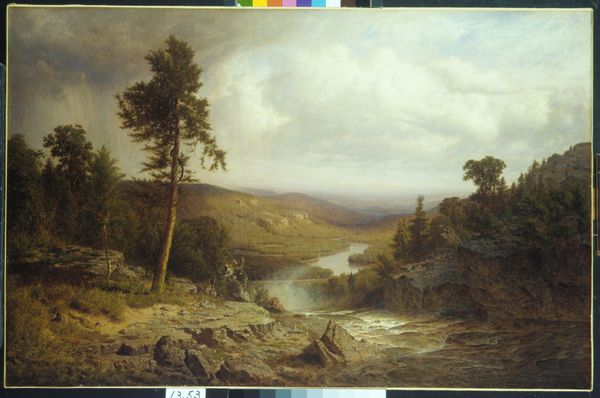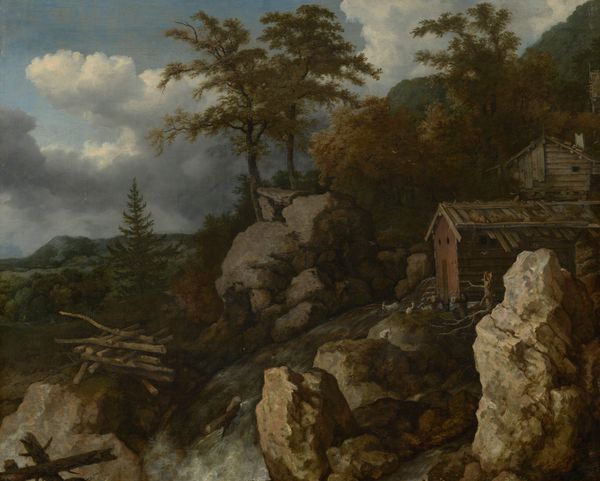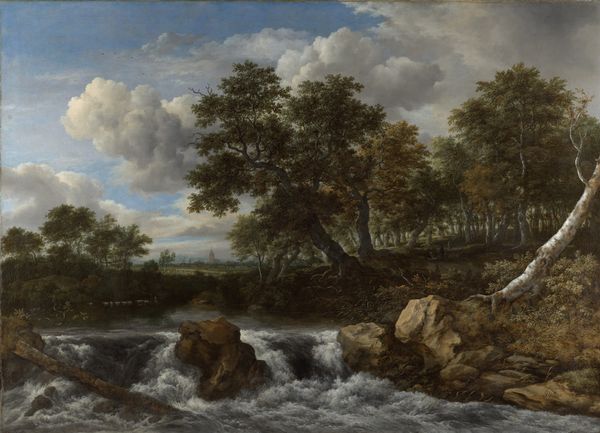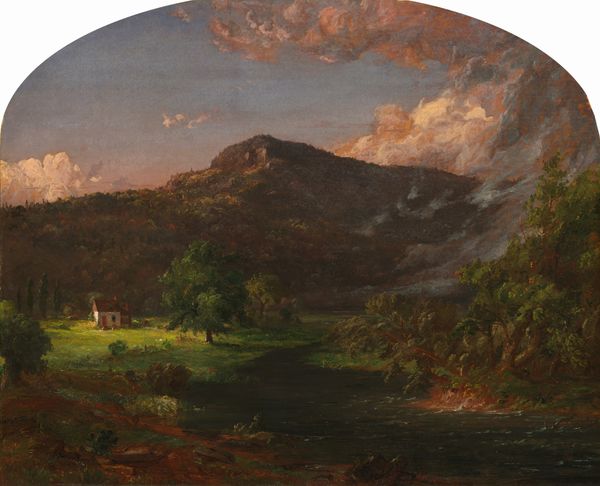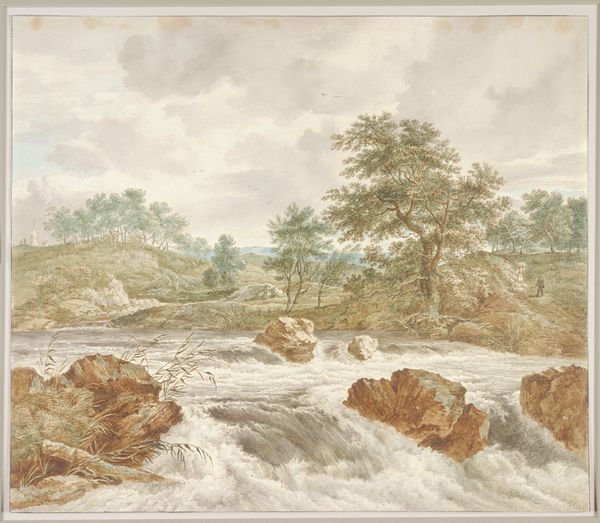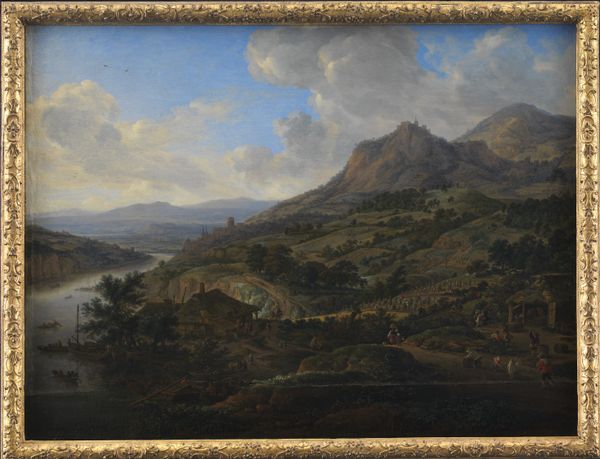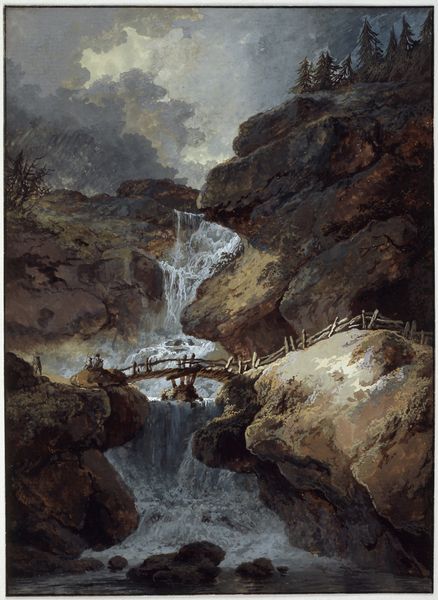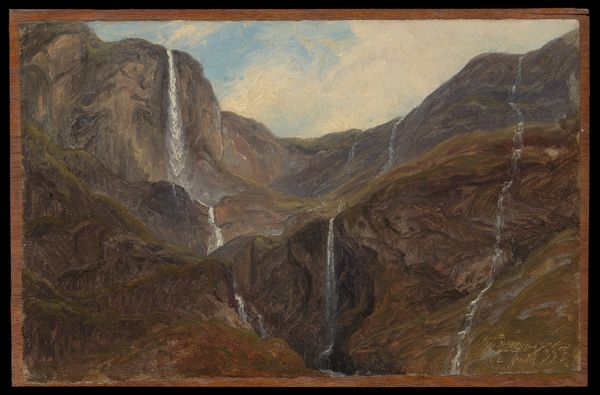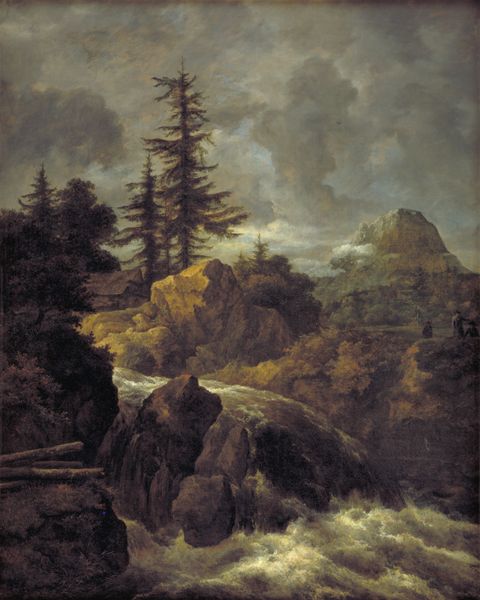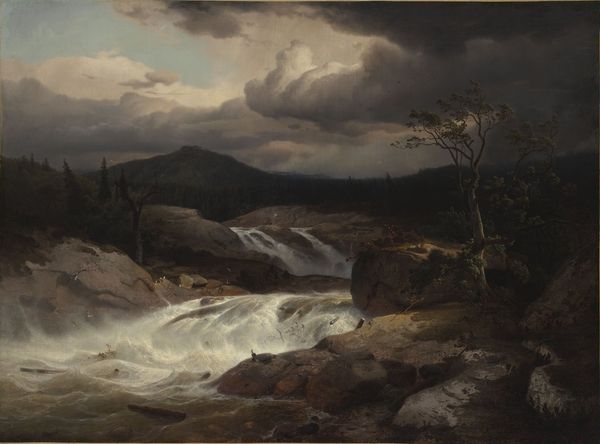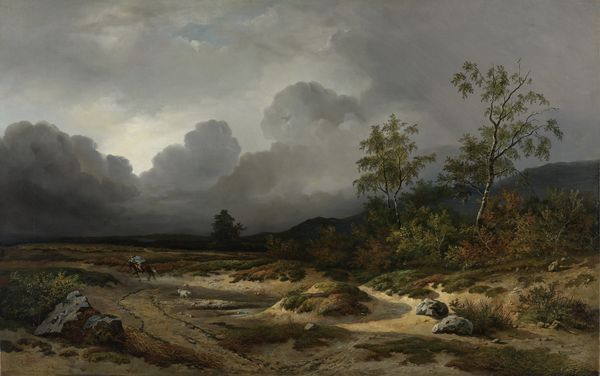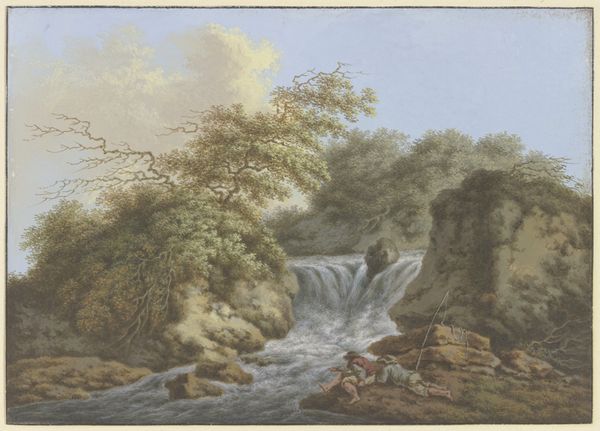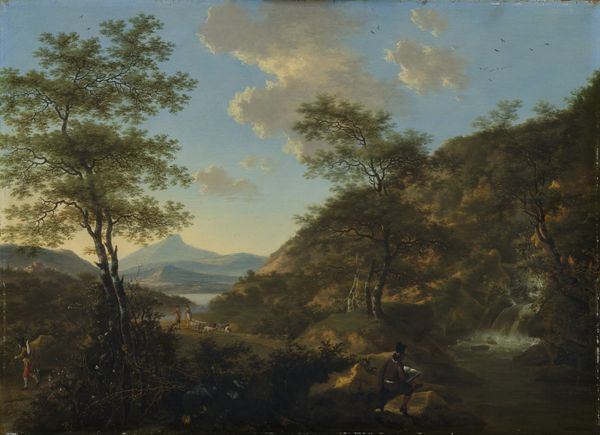
oil-paint
#
baroque
#
dutch-golden-age
#
oil-paint
#
landscape
#
waterfall
#
oil painting
#
mountain
#
water
#
realism
Dimensions: 21 1/4 x 16 1/2 in. (54 x 41.9 cm)
Copyright: Public Domain
Editor: This is Jacob van Ruisdael's "Mountain Torrent," painted in the 1670s and residing at the Metropolitan Museum of Art. It’s an oil painting with this amazing contrast between the rugged rocks and the frothy, turbulent water. I'm struck by how the human presence seems so small and insignificant against the grandeur of nature. What do you see in this piece? Curator: I see the construction of national identity. Landscapes like this became incredibly popular in the Dutch Golden Age. Though Ruisdael painted "Mountain Torrent," note that it depicts an idealized and somewhat fantastical vision. Waterfalls like that weren’t typical of the Dutch landscape. He likely synthesized elements from Scandinavian imagery. This creation of imposing, sublime landscapes allowed the Dutch to assert their cultural prowess and economic power on a global stage. It was less about literal accuracy, and more about projecting a sense of strength and independence. Do you see how the positioning of the houses gives visual precedence to the falls? Editor: That's fascinating! So, it's almost like the Dutch are borrowing someone else’s scenery to make a statement about themselves? It seems counterintuitive! Curator: Exactly. It highlights how art doesn't always reflect reality, but rather shapes it. These weren't just pretty pictures; they were instruments in constructing and promoting a specific national narrative, linking the people to a specific version of a homeland, whether real or imagined. Think of how landscape paintings were bought, sold, and displayed— who had access to these images, and what messages were they receiving? How was the "Dutch Golden Age" in fact enabled by exploitation happening elsewhere in the world at that time? Editor: I never considered that aspect of it before. So, the painting isn't just a beautiful landscape, but a carefully constructed image used for political and social purposes. Thanks for sharing! Curator: It illustrates how art always exists within a complex web of power, patronage, and public perception.
Comments
No comments
Be the first to comment and join the conversation on the ultimate creative platform.
